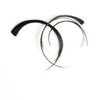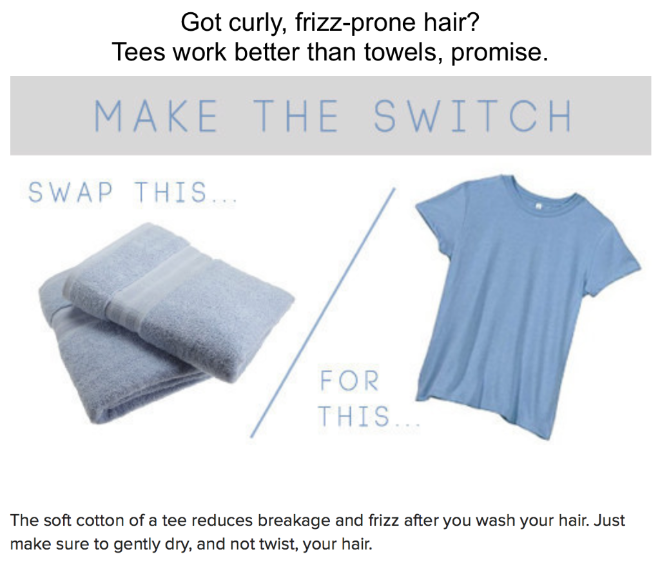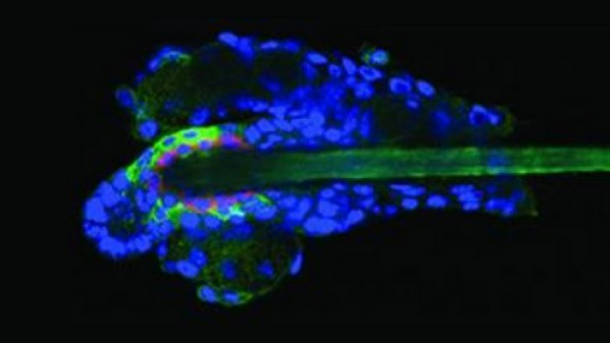|
by Michelle Phan
Sometimes a good hair day vs. a bad hair day shouldn’t be blamed on the type of hair you have, but what the weather is or even where you live. Different climates can have different effects on hair depending on heat, moisture, and other natural factors. With the seasons rapidly changing, here are my tips for beautiful, healthy hair, no matter the weather!How to protect your hair from… Cold, Dry Air: Cold, crisp air can cause hair to dry out and become brittle. It can also lead to static strands, so make sure to keep it moisturized. If you notice an excess of static, try this quick trick. Another tip is to stay inside after washing your hair until it fully dries during the colder months, as wet hair is more prone to breakage. Wind: While windswept hair can have a perfectly tousled effect, wind-blownhair is a totally different story. Too much exposure to those breezy fall days can increase tangles and knots, leading to unruly hair. Quick fix: tuck your hair in your sweater until you get in doors, or use a silk scarf as a head wrap. Humidity: The more water vapor in the air, the more humid it will be. Excessive humidity is uncomfortable and takes a toll on hair. Humid weather causes strands to absorb more moisture and can actually change the length and look of your hair. One way to tame the effects of humidity, and the frizz that often comes with it, is to rinse your hair with cold water instead of warm in order to seal the cuticle. It will then lay flat instead of flying upward and out of control. Bonus: hitting your locks with a blast of cold water will also make it look shinier and sleeker! Rain: Rain often has similar frizz-ifying effects, and it can also cause hair to flatten out and become limp. To keep hair looking smooth post-rain, Preventionsuggests hydrating your hair prior to exposure, so the moisture from the rain doesn’t move up your strands. If you’re afraid of limp, lifeless hair, try a sleek up-do such as a bun or a low-maintenance braided look, and carry a comb in your purse just in case. Sun Damage: If your hair feels out of control or lackluster after a summer of sun exposure and dry weather, I suggest undoing some of the damage by returning moisture and nutrients to your tresses. Try one of these 3 DIY hair masks like the ones I shared here to jump-start the restoration process.
0 Comments
Thinning hair or guys with naturally thin hair have to abide by different rules when styling their hair.
Certain hairstyles are a no-go and certain products will make your hair appear even thinner, here are some great tips and advice on how to deal with and style thin or thinning hair. 1. Stay Away From ‘Gel’ Products Gel products that give hair a wet look are a no-go for guys with thin hair. These types of hair products tend to clump your hair together and make it heavy, revealing a large amount of your scalp which no one wants. 2. Use Products That Help with Thinning Hair * Toppik or Eclipse: A great product that will help with giving you a more thick haired look. This product uses fibers that intertwine with your natural hair and make it seem fuller and not as thin. * Nizoral or Nioxin Shampoo: Thinning hair can sometimes be the result of an unhealthy scalp or weather conditions that are cold and dry. Nizoral definitley helps in this department. Nioxin nelps to remove follicle-clogging sebum, and environmental residues from the scalp and hair. Cleanses to provide thicker-looking hair. * Matte Wax: Instead of Gel for hairstyling, use a matte wax. A matte wax will not have the wet gel effect and reveal your scalp, it will give you a more thicker and natural look. 3. Choose The Right Hairstyle If you have thinning hair, it’s best to stay away from any spiky hairstyles. Go for more flat hairstyles with a fringe that are laid down. Definitely check out my post above on how to chose the right haircut for you. From HairStyleOnPoint Although, nothing feels better than a long hot shower, especially when it is cold outside, there are two factors to account for as soon as you’re done with your 15 minutes of bliss. 1 - It's freezing and now you have dripping wet hair which you probably won't want to air dry. And 2 - you now need to blow-dry your hair, (you probably saw that one coming). So, here are our top 5 reasons you need a shower cap!
Re-styling: Because it’s Monday, and you don’t want to wash your hair… again. Our "Sunday Hair" is almost in need of a washing and you're having a case of those Monday's. You can stretch that style one more day with use of your handy dandy shower cap. It will not only keep your hair from getting wet, but it will block out all moisture that would normally cause frizz. Deep Conditioning: To receive all the benefits of a deep conditioner it is best to shampoo hair, apply deep conditioner, twist back and COVER! By covering your hair in a shower cap it allows the heat from your head to create the perfect enclosed environment for product to penetrate the cuticle. Sleepy Time: If you hate waking up with unmanageable bed head, try using a shower cap (or a silk head wrap) when you sleep. While it might not be the most glamorous way to snooze, you can say bye-bye to the AM rats nest because it retains your style throughout the night. Reduce Breakage: Your hair will thank you because you are reducing damage and hair breakage. Using a shower cap when sleeping, getting ready, or prolonging your hair washing means less pulling and styling, and thus stronger, longer, healthier hair. Save water - California may be the most familiar state suffering from the draught, however all over the world we are in a water crisis. Do your part to preserve the earth’s natural resources by shortening your shower time. Using a shower cap makes it a breeze to pop in and out of the shower in a flash saving gallons upon gallons of water. Scientists identify dormant stage as crucial to healthy hair growth
By Andrew McDougall, 04-Mar-2016 A new study shows that the dormant phase for hair can actually be important for maintaining the cells' rejuvenating activity over time, as inhibiting a specific stem cell gene can speed up hair growth cycle, but also wear out and damage the hair follicle too. In their research, published in PNAS , Elaine Fuchs, professor at Rockefeller University, and Kenneth Lay, a graduate student in her lab, identify Forkhead box C1 (FOXC1) as a key transcriptional regulator of hair follicle stem cell (HFSC) activity and bulge maintenance. They found that loss of FOXC1 reduces the threshold for HFSC activation, causing excessive HFSC usage and dramatically shortens periods between hair growth cycles. Stem cells residing in hair follicles are held in an inactive state, a bulge, for long periods of time and while in this quiescent state, they don't reproduce until they receive signals from their surroundings that it's time to regenerate. Usually the stem cells create a new bulge along with the new hair, while ensuring that the old bulge and the old hair stay put in the hair follicle. Only the new bulge can make another new hair, but the old bulge is kept in place to maintain a thick and lush coat. Study In order to study this further, the scientists carried out a study in mice, as for them hair follicles can accumulate up to four of these bulges, building on previous work. "In an earlier study, my lab showed that when mice age, the old fat in their skin produces higher levels of a secreted signal, called BMP," Fuchs says. "This signal acts as a molecular brake on the hair follicle stem cells, causing them to spend much longer times in quiescence." In this study, Lay identified the stem cell gene that is activated by BMP signalling, and showed that when this gene is missing, the stem cells grow hairs with dramatically shorter intervals. "We thought initially that the key to hair growth might be the fountain of youth, but the mice's hair coat surprisingly thinned and greyed precociously,” says Fuchs. When Lay and Fuchs created mice that lack FOXC1, by disabling the gene that produces this protein, they observed that the animals' hair follicle stem cells spent more time growing hairs and less time in quiescence. Over the course of nine months, while hair follicles from normal mice grew four new hairs, those from the FOXC1 knockout mice had already made new hairs seven times. "The knockout stem cells enter an overactive state in which they can't establish quiescence adequately," explains Lay. Because of this over-activity, the hair follicles could not retain their old bulges and could not stay properly tethered to the hair follicle when the newly growing hair pushed past it, meaning only one hair would grow through and hair would lose its thickness. And since the bulge emits quiescence signals, its loss activated the remaining stem cells even faster, speeding up the cycle. Though hair had no problem growing, it was more damaging to the hair follicle, and with the absence of FOXC1 producing hairs at such pace, it wears the HFSC out quicker leading to greying and hair loss. "Hair follicle stem cells influence the behaviour of melanocyte stem cells, which co-inhabit the bulge niche," explains Fuchs. "Thus, when the numbers of hair follicle stem cells declined with age, so too did the numbers of melanocyte stem cells, resulting in premature greying of whatever hairs were left." The researchers say that not much is known about naturally occurring hair loss with age, but these balding knockout mice may provide a model to study it. Copyright - Unless otherwise stated all contents of this web site are © 2016 - William Reed Business Media SAS - All Rights Reserved – For permission to reproduce any contents of this web site, please email our Syndication department [email protected] - Full details for the use of materials on this site can be found in the Terms & Conditions © 2016 |
Hair by BrianMy name is Brian and I help people confidently take on the world. CategoriesAll Advice Announcement Awards Balayage Barbering Beach Waves Beauty News Book Now Brazilian Treatment Clients Cool Facts COVID 19 Health COVID 19 Update Curlies EGift Card Films Follically Challenged Gossip Grooming Hair Care Haircolor Haircut Hair Facts Hair History Hair Loss Hair Styling Hair Tips Hair Tools Health Health And Safety Healthy Hair Highlights Holidays Humor Mens Hair Men's Long Hair Newsletter Ombre Policies Procedures Press Release Previous Blog Privacy Policy Product Knowledge Product Reviews Promotions Read Your Labels Recommendations Reviews Scalp Health Science Services Smoothing Treatments Social Media Summer Hair Tips Textured Hair Thinning Hair Travel Tips Trending Wellness Womens Hair Archives
January 2025
|
|
Hey...
Your Mom Called! Book today! |
Sunday: 11am-5pm
Monday: 11am-6pm Tuesday: 10am - 6pm Wednesday: 10am - 6pm Thursday: By Appointment Friday: By Appointment Saturday: By Appointment |





 RSS Feed
RSS Feed